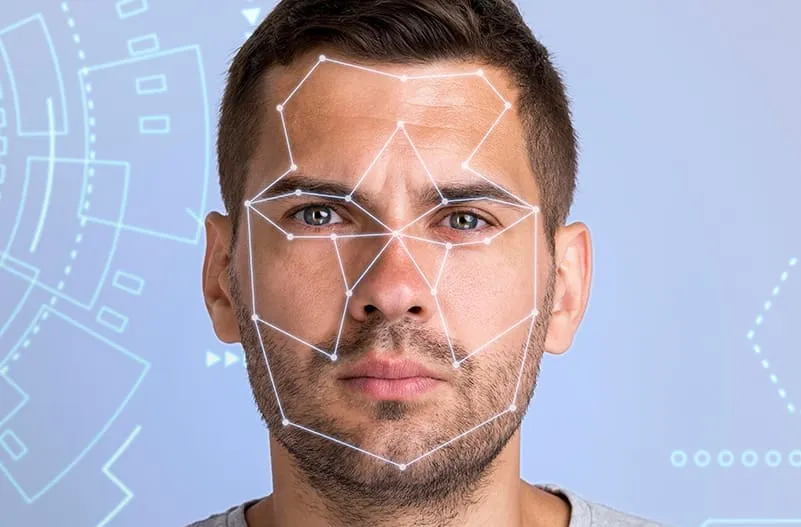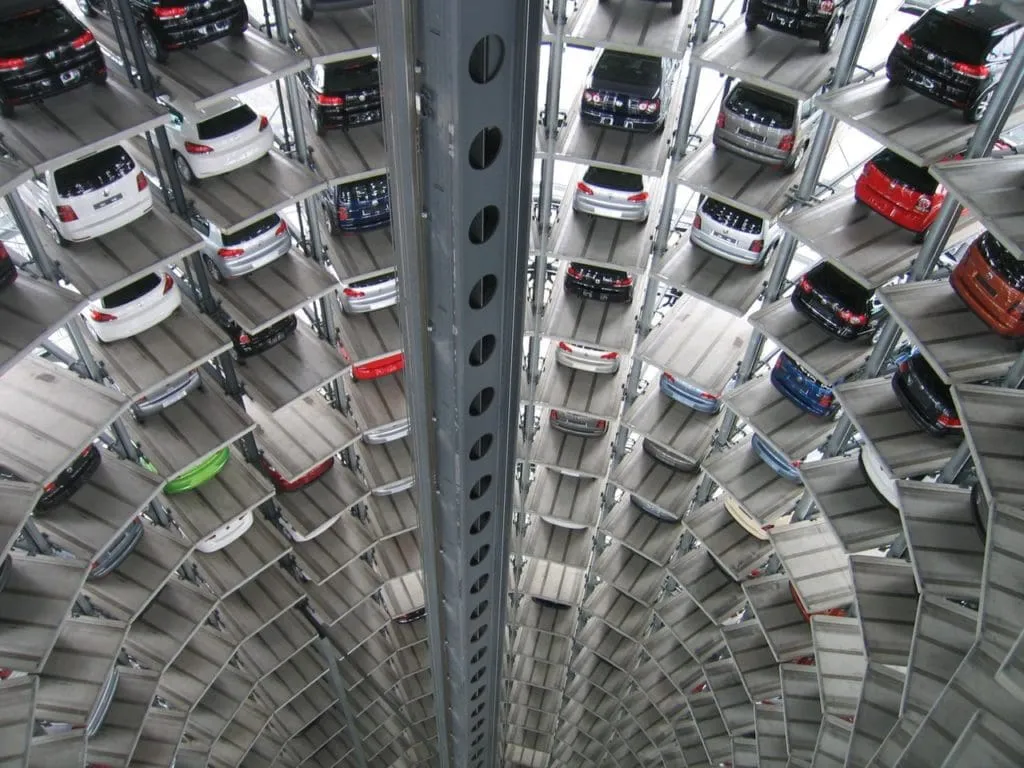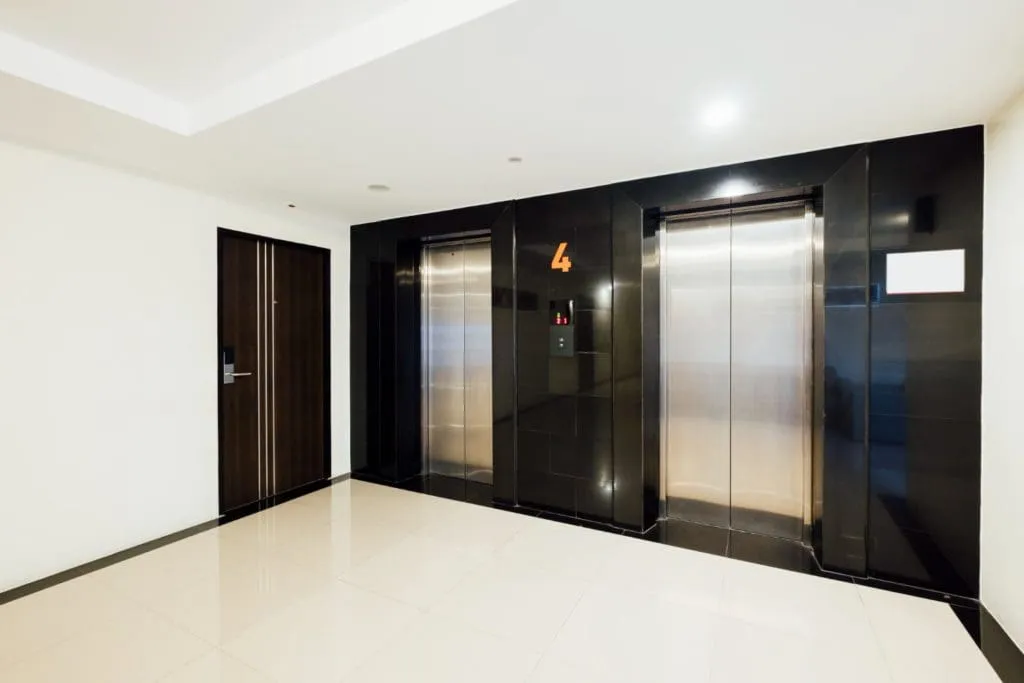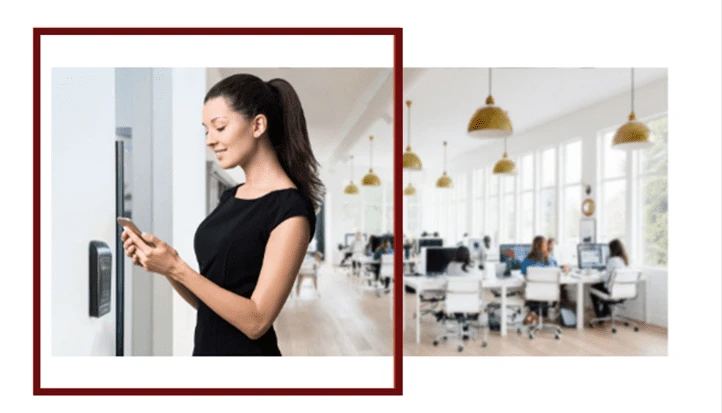Top Access Control Trends for 2025

Updated on December 20, 2024 Access control trends 2025 showcase groundbreaking innovations that prioritize user-friendly experiences, robust integrations, and advanced operational capabilities. As technology continues to evolve, organizations must consider how these trends can elevate their security systems. Let’s explore how access control is transforming in 2025 and what organizations should consider enhancing their security strategies. Cloud-Based Access Control Systems: Centralized and Scalable Cloud-based access control systems are rapidly becoming essential and will become the top access control trend in 2025. These systems offer centralized management for security teams, making it easier to handle multiple sites from one platform. By moving to the cloud, businesses can unify control over access credentials, monitor system health, and manage configurations remotely. The scalability of cloud-based solutions allows businesses to expand their security infrastructure without significant hardware investments. As organizations grow, they can easily add more sites or users without overhauling the entire system. Additionally, cloud solutions offer cost-effective disaster recovery and simplified software updates, ensuring that organizations stay up to date with the latest security features without disrupting operations. This cloud-centric model reduces reliance on physical hardware, saving space, and improving operational efficiency. It also enables security teams to streamline data sharing, enhance collaboration, and quickly implement changes across various sites. For businesses with multiple offices or facilities, the centralized nature of cloud access control helps ensure that security is never compromised, even as operations expand. Mobile and Contactless Access: A Seamless User Experience Mobile-based access continues to replace traditional credentials like keycards and fobs, and this access control trend is only set to grow in 2025. The shift to mobile and contactless access provides a more secure and user-friendly experience. Employees, visitors, and contractors can use their smartphones or wearable devices for seamless entry into secure areas, eliminating the need for physical cards and reducing the chances of lost or stolen credentials. By leveraging technologies like Bluetooth, NFC, and QR codes, mobile access solutions ensure fast, reliable, and secure entry. Customizable mobile credentials also allow organizations to integrate visual identity features—such as job titles, department designations, or photos—into the access system, enhancing both security and user experience. Mobile credentials are more than just a convenience; they represent a significant leap forward in access control technology. The security features embedded in smartphones, such as biometric authentication, encryption, and secure communication channels, make mobile access a safer option compared to traditional physical cards. With the ability to remotely deactivate or update credentials, mobile-based access control provides organizations with flexibility and peace of mind. So, don’t be surprised if this solution becomes the top access control trend in 2025. Touchless Technology: Enhancing Hygiene and Efficiency The growing demand for touchless access solutions has been a game-changer, particularly due to the heightened focus on hygiene and reducing physical contact in the wake of the global pandemic. Touchless systems, which often rely on motion sensors, facial recognition, or mobile credentials, offer a modern and hygienic way to navigate buildings without the need to touch any surfaces. These technologies not only improve hygiene but also reduce wear and tear on physical hardware. As more users interact with access systems, devices are subjected to frequent use and potential damage. Touchless technology extends the lifespan of devices by reducing the frequency of contact and minimizing physical strain. This results in fewer maintenance needs and cost savings in the long run. As organizations focus more on the well-being of their employees and visitors, touchless systems become a significant part of the access control landscape. They enhance the overall user experience by making entry faster and more convenient while promoting a safer, cleaner environment. Smart Automation: Streamlining Operations The next in the access control trends list is Automation. By integrating access control systems with building management platforms, businesses can automate a wide range of processes, such as locking schedules, occupancy monitoring, and visitor registration. Automated systems reduce the manual effort involved in managing security tasks and provide a more efficient approach to operational management. For example, in an emergency scenario, automated lockdown protocols can trigger swift and coordinated responses across multiple locations. This ensures that all entry points are secured immediately, and relevant authorities are notified, without requiring manual intervention. Similarly, automated systems can adjust access privileges for users based on factors like location, time of day, or security risk level, ensuring that only authorized individuals can access specific areas at appropriate times. Smart automation enhances operational efficiency by eliminating the need for time-consuming administrative tasks and improving security coverage. With automation, organizations can focus on higher-priority security concerns, knowing that routine tasks are being handled automatically. Video-Integrated Access Control: Enhanced Situational Awareness Video-integrated access control systems are rapidly gaining traction and will continue to do so in 2025, combining access control and video surveillance for a more comprehensive security solution. This integration allows security teams to view real-time video footage in conjunction with access events, providing instant visual verification of an entry attempt. By combining video data with access control logs, security personnel can quickly assess whether an entry was legitimate or if an alert needs to be raised. This integration also makes it easier to review incidents and conduct investigations. Video surveillance systems can be integrated with cloud storage solutions, allowing for easy access to recorded footage from anywhere. The ability to monitor both video and access events from a single platform enhances situational awareness, improves incident response times, and helps organizations make better security decisions. Video-integrated access control enables a holistic approach to security, making it easier to protect assets and personnel while optimizing security operations. This makes it as one of the top access control trends for 2025 Remote Management: A Flexible Security Solution Remote management is a critical cornerstone of modern access control trends for 2025. With an increasingly hybrid workforce, businesses need systems that enable administrators to oversee and manage security operations from anywhere. This access control trend supports hybrid work environments by providing the flexibility to monitor and update credentials, manage incidents, and
A Complete Guide to Parking Access Control System

Updated on December 9, 2024 Managing parking facilities is a complex task, requiring efficient systems to regulate the influx and outflux of vehicles while ensuring security and ease of access for users. Parking access control systems, ranging from manual management to fully automated solutions, are designed to address these challenges effectively. This comprehensive guide explores key aspects of parking access control systems, their benefits, and various technologies that have transformed parking management in recent years. What is an Automated Parking Lot Access Control System? An automated parking lot access control system is a solution that enables facility owners to manage parking operations efficiently, restrict unauthorized access, and generate revenue. These systems rely on a combination of physical access control mechanisms, credential management, and integrated payment solutions. Automation introduces significant advantages, such as reducing operational costs, enhancing security, and improving user experiences. Automated parking systems typically use ticketing machines with barcodes, QR codes, or magnetic strips, paired with software for seamless tracking and management. Whether through fully automated systems or hybrid solutions incorporating human oversight, automation ensures a safe, efficient, and user-friendly parking experience. Types of Parking Lot Access Control Systems Key/Remote Access This traditional system works well for long-term users but presents challenges for short-term users. The potential for key loss and unauthorized use makes it less secure compared to modern solutions. Keycard or Key Tag Access Similar to key-based systems, keycards offer enhanced security by allowing administrators to deactivate lost or stolen cards. This method is suitable for both permanent and mid-term users, especially in commercial settings. Keypad Entry Keypads grant access using personalized or general codes. Their flexibility and ease of installation make them a popular choice for short-term users, such as visitors to residential complexes or offices. Codes can be programmed for limited time use and deactivated as needed. License Plate Recognition (LPR) LPR technology uses cameras to read and verify license plates, allowing seamless entry for registered vehicles. This method eliminates the need for physical credentials and simplifies tracking time spent in the facility. Phone Number Recognition Users call a designated number to trigger gate access, ensuring only verified individuals gain entry. This system works well for all types of users, from short-term visitors to long-term tenants. Mobile App or Mobile-Based Access and Contactless Mobile apps have become integral to modern parking systems. These apps allow users to access parking facilities via mobile-based credentials, providing a highly user-friendly solution. Additionally, the inclusion of contactless functionality ensures a smooth and secure experience by enabling proximity-based access, where users don’t need to physically touch any devices. This system is becoming increasingly popular for its convenience, especially for short-term and transient users. Advantages of Automated Parking Access Systems Automated parking lot access solutions offer several advantages over traditional methods, making them a smart investment for facility owners: Enhanced Operational Efficiency By replacing manual processes with automated systems, parking facilities can streamline operations, reduce wait times, and eliminate bottlenecks at entry and exit points. Cost Reduction Automation minimizes the need for on-site staff, lowering payroll expenses. Machines efficiently handle ticketing, traffic direction, and payment collection. Increased Revenue Integrity Automated systems reduce revenue leakage by preventing employee-related thefts and mitigating errors in manual transactions. Comprehensive Data Insights Automated systems maintain detailed records of all transactions, offering valuable data for analytics. Facility owners can use this information to identify trends, optimize parking capacity, and enhance decision-making. Improved Security Advanced access control mechanisms like LPR and RFID technology ensure that only authorized vehicles gain entry, reducing the risk of unauthorized access and related incidents. Choosing the Right Parking Lot Access Control System Selecting the ideal system depends on the unique needs of your parking facility. Factors to consider include: User Base: Assess whether your users are short-term visitors, long-term tenants, or a mix of both. Security Requirements: Prioritize systems like LPR or RFID for high-security locations. Ease of Use: Ensure the system is intuitive and accessible for all users, including those unfamiliar with advanced technology. Scalability: Opt for solutions that can grow with your facility’s needs, accommodating increased traffic or expanded services. By aligning your choice with these factors, you can create a tailored parking access solution that balances security, efficiency, and user satisfaction. Innovations in Parking Lot Access Control Technology The parking industry has witnessed remarkable technological advancements in recent years. These innovations aim to enhance the user experience, boost efficiency, and ensure sustainability: Cloud-Based Parking Management Cloud-based platforms offer centralized management of multiple parking facilities, enabling real-time monitoring and remote control. This approach enhances scalability and reduces the need for on-site infrastructure. Smart Sensors Smart sensors embedded in parking spaces detect vehicle presence, providing real-time availability updates to users via mobile apps. This feature reduces the time spent searching for parking spots. Mobile Integration Mobile apps have become integral to modern parking systems, offering features such as digital payments, navigation to available spaces, and reservation management. Renewable Energy Solutions Sustainable parking facilities now integrate renewable energy sources like solar panels to power access control systems, lighting, and EV charging stations. Advanced Analytics Data analytics tools analyze parking patterns, helping facility owners optimize space usage and implement dynamic pricing models to maximize revenue. Real-Life Applications of Parking Access Control Systems Parking access control systems are deployed across various sectors, demonstrating their versatility and impact: Corporate Offices Automated systems streamline employee parking, reducing entry times and minimizing delays. Advanced features like LPR ensure secure access for registered users. Residential Complexes Secure access control mechanisms, such as keypads or phone recognition, offer convenience and safety for residents and visitors alike. Commercial Parking Lots Dynamic systems handle high traffic volumes efficiently, incorporating automated ticketing and payment solutions to optimize operations. Healthcare Facilities Hospitals and clinics benefit from smart parking systems that prioritize patient and staff access while accommodating emergency vehicles. Educational Institutions Universities use automated parking solutions to manage large student and staff populations, ensuring organized and secure parking facilities. Future Trends in Parking Lot Access Control As urbanization and technology
Elevator Access Control Simplified: A Comprehensive Guide

Updated on December 9, 2024 In modern building management, elevator access control has become essential to secure and restrict movement within multi-floor facilities. Unlike conventional access control, where authorized users simply open doors, elevator access control directs movement through multiple building levels, limiting floor access to only those permitted. This guide delves into the mechanics of elevator access control, including how it works, types of systems, credentials, configurations, security challenges, and evolving cloud-based technologies. With this knowledge, building managers and property owners can elevate their security measures to enhance building convenience and safety. Deciphering the Functionality: An elevator access control system relies on three main components: Elevator Control Buttons: Used to open and close doors, make emergency calls, and select floors. Access Readers: These devices, using RFID, keypads, or biometric scanners, verify that users have the proper credentials to access specific floors. Access Control Panel: This control hub manages user data and permissions, typically as an on-site server or through a cloud-based solution. Together, these components ensure that only authorized personnel can access certain floors, promoting security and safety in sensitive areas like office buildings, medical facilities, or high-rise residential complexes. Streamlined Usage Instructions Using elevator access control is straightforward. Upon entering the elevator, a user presents their credential—be it a keycard, mobile phone, PIN, biometric scan, or one-time code. If authorized, the system allows the elevator to move to the designated floor. Unauthorized users will be restricted from selecting or accessing restricted floors. Types of Elevator Access Control Credentials To accommodate various security needs and user preferences, elevator access systems support different types of credentials: Mobile Credentials: Allows users to access floors by tapping a mobile device, reducing the need for physical keys or cards. Keycards, Fobs, or Badges: The most common credentials, these provide reliable access when swiped or tapped. PIN or Passcode: Ideal for temporary or multi-user access, users enter a code to gain access to specific floors. One-Time Code: This credential type is ideal for one-time visitors, such as deliveries, allowing managers to provide a temporary access code that expires after use. Biometric Access: Uses unique user data, like fingerprints or facial recognition, to ensure high-security access. Configurations of Elevator Access Control Systems Elevator access control can be customized to fit specific building needs. Here are four common configurations: Private Elevator for General Access: Users require authorization to summon the elevator but can access any floor freely once inside. Public Elevator with Restricted Floor Access: The elevator can be called without restrictions, but access to certain floors requires credentials. Private Elevator with Selective Floor Access: Users need authorization both to call the elevator and to access specific floors. Destination Control System (DCS): This advanced system allows users to select their destination on an external panel, which optimizes elevator usage based on the scanned credential, directing users to specific elevators. The Rise of Cloud-Based Elevator Access Control With remote work and evolving security needs, cloud-based access control systems are gaining popularity. These systems allow remote management and monitoring, making them ideal for multi-location building owners and property managers. They also support seamless updates and scalability, adapting easily as buildings add new floors or tenants. Popular Cloud-Based Options Include: Single Elevator Access Control: A cost-effective solution for small buildings or residences. Elevator Banks: Suited for high-rise commercial buildings where multiple elevators serve various floors. Smart Elevators: Integrates multiple elevators into a centralized system, ideal for office towers where efficient elevator use is essential. Expanded Security Enhancements Modern elevator access control systems offer enhanced features to ensure both convenience and heightened security: Time-Based Access Permissions: Limits floor access to specific hours, suitable for facilities with restricted visiting hours. User Logging and Reporting: Tracks access attempts and movements, providing insights for security audits. Anti-Passback Technology: Ensures credentials can’t be reused immediately, reducing the risk of “tailgating” unauthorized entry. Integration with CCTV: Pairs elevator access logs with real-time video, allowing security teams to monitor and respond to potential threats efficiently. Detailed Challenges and Solutions in Elevator Access Control Elevator access control faces unique challenges due to frequent public use and the potential for security lapses. Here’s a look at some common issues and solutions: Tailgating: One of the most common issues, tailgating involves unauthorized individuals entering behind an authorized user. Anti-tailgating technology and clear user guidelines can help mitigate this risk. System Failures: Elevator access systems must remain operational even during power outages or software failures. Back-up power sources and fail-safe protocols can keep elevators running in an emergency, ensuring user safety. Credential Security: Lost or stolen credentials, like cards or mobile devices, can compromise security. Multi-factor authentication and biometric credentials offer additional protection by tying access to a user’s unique characteristics. Technological Advancements in Elevator Access Control In the ever-evolving landscape of building security, modern elevator access control systems integrate cutting-edge technologies to help overcome common security challenges. Here’s how these systems integrate with other technologies to enhance reliability and security: Mobile Access Control Integration: Mobile access control systems enable building managers to remotely grant access to elevators using mobile devices. This capability is especially useful in managing visitor access and responding to emergencies quickly, all without the need for physical presence on-site. Video-Based Analytics Integration: Advanced access control systems integrate seamlessly with video surveillance, using video-based analytics to detect unusual behavior patterns near elevators. By analyzing real-time footage, the system can identify potential security threats, alerting personnel to suspicious activities, and allowing for quicker response times. This integration also allows for footage to be linked directly to specific access events, simplifying the process of security review and incident management. Tenant Management Module: Access control systems offer robust tenant management features, enabling multi-tenant buildings to customize and streamline access for each tenant. This module ensures that tenants can only access floors or areas relevant to their needs, minimizing security risks and ensuring that authorized personnel have controlled access across different building levels. Visitor Management Module: A visitor management module integrated with the




